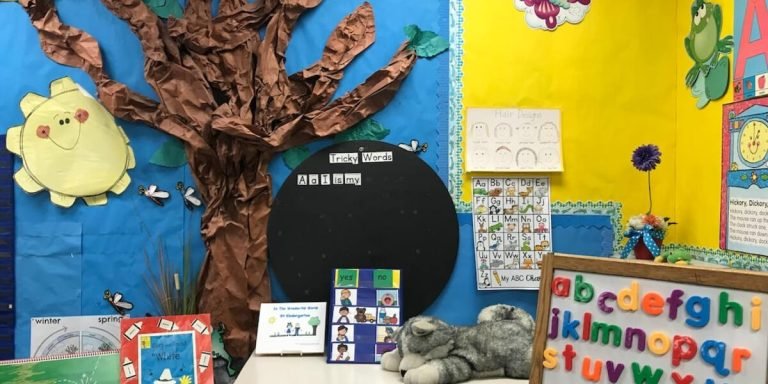Create a platform for Innovative Childhood Education: A Comprehensive Guide
Creating a platform for innovative childhood education requires the cohesive integration of technology. The ever-evolving digital sphere provides numerous avenues that can transform traditional teaching methods and prepare our children to flourish in the 21st century. However, navigating this vast landscape could be daunting without comprehensive guidance.
This blog post aims to provide just that – insightful knowledge on how we can effectively integrate technology into early years’ curriculum patterns and create pedagogically sound platforms that stimulate intuitive learning processes. Furthermore, it explores potential technological tools for educators while maintaining an engaging environment conducive for intellectual growth among youngsters.
Did you know?
Did you know? Finland, often lauded for its innovative approach to childhood education, doesn’t start formal schooling until age 7. The emphasis is on learning through play and fostering creativity in the early years.
Understanding the Role of Technology Integration in Modern Education
Technology integration has evolved into a fundamental element of modern education. In our technologically advanced society, the traditional chalk-and-blackboard approach has made room for digital learning tools; and rightly so. Why?
Because technology enables educators to create a platform that is immersive, engaging, and tailor-made for today’s digitally savvy students.
Understanding this role begins with acknowledging how it merges teaching methodologies and tech resources seamlessly within an educational context. It isn’t just about using computers in classrooms anymore – it’s much bigger than this rudimentary concept! Presently in 2023, technology integration means building interactive smartboards into lessons or creating virtual reality field trips to augment tactile learning experiences.
Incorporating innovative technologies enables teachers not only provide enriched content but also stimulate analytical thinking abilities among their pupils. They are able to design dynamic lesson plans which employ an assortment of applications ranging from video presentations to online quizzes- transforming passive learners into active participants.
Key Components of a Robust Educational Tech Platform
Today’s digitally driven era necessitates understanding the role of technology in education. Focusing on creating a platform that successfully merges education and tech is crucial. The key components of a robust educational tech platform include:
- Interactive content
- Personalized learning experiences
- Easy accessibility for all students
- Real-time feedback and assessments
- Collaborative tools for students and teachers
1. User-Friendly Interface: To make e-learning enjoyable for children, the interface needs to be engaging, simple and intuitive. A complex layout can deter students rather than invite them.
2. Curriculum-Aligned Content: Integrating curriculum-aligned content ensures continuity in learning even when using digital platforms.
3.Collaborative Features: Platforms should employ features encouraging collaboration among peers like discussion forums or shared boards which help students learn cooperatively.
4.Tracking Progress — Tools For Assessment: Measuring progress is essential within any form of teaching; this holds true for online learning as well. Integrated assessments keep track of student growth periodically and identify areas requiring more attention.
5.Data Privacy And Security Measures – With increasing cyber threats targeting schools’ databases containing sensitive information about their pupils, your chosen platform must have stringent security protocols.
6.Device Compatibility – In 2023 where usage varies from smartphones to tablets to PCs, ensuring compatibility across devices not only aids accessibility but also enhances user experience significantly.
7.Integration With Other E-Learning Tools & Apps- These integrations add dynamism by offering varied learning tools suitable for addressing different subjects or aspects.
Challenges and Solutions in Developing an Interactive Learning Environment
The integration of technology in modern education brings with it a multitude of challenges but, at the same time, offers several solutions for creating interactive learning environments.
Challenges often arise from resistance to change and unfamiliarity with new technologies. This can come from educators who are used to traditional teaching methods or parents who worry about excessive screen time’s potential impacts on their child’s health and well-being. There may also be issues related to access and equity; not every student has the necessary equipment or internet connectivity required for digital learning procedures.
To address these concerns requires effort and attention at multiple levels. Schools need professional development programs that help teachers become confident users of educational technology tools as they create a platform where students learn effectively using this approach.
On an accessibility front, efforts like device donation drives or low-cost broadband initiatives could ensure all children have equal opportunities when it comes to exploring digitally-enhanced educational spaces—helping level playing fields across socio-economic divisions.
Another challenge lies within engaging students without sacrificing academic rigor – striking balance between fun elements interaction provides through edtech applications alongside maintaining curriculum standards sometimes proves difficult task educators navigate while optimizing tech-oriented lesson plans .
Strategies for Effective Implementation of Tech Platforms in Schools
Strategies for implementing tech platforms effectively in schools take center stage as we maneuver through the ever-evolving landscape of 21st century education. With constant advancements, educators and parents alike are recognizing a pressing need to create a platform that integrates technology seamlessly into classroom instruction.
Creating such a platform involves an understanding of both pedagogy and technology. The development must be curriculum-centered, ensuring it enriches the learning experience rather than simply replacing traditional teaching methods with digital alternatives. Keeping student engagement at its core, implementation strategies should include interactive lessons, multimedia content presentations, virtual field trips amongst others- all aimed at making classrooms more vibrant places for young minds to explore.
To enable success in this endeavor though requires investment not just monetarily but also time-wise for teacher training sessions or professional developmental workshops on how best utilize these new resources available today while maintaining focus their primary role – educating students well within established parameters set by state standards guidelines and national educational policies existing presently this year – 2023.
Curriculum Design and Digital Tool Alignment
Understanding the relationship between curriculum design and digital tool alignment is vital in creating an effective tech platform for educational settings. The integration of relevant technology into teaching methods can greatly enhance students’ learning experience, provided it aligns seamlessly with your instructional needs.
When you aim to create a platform that works hand-in-hand with curricula, consider how specific technologies fit within your content areas first. For instance, would coding programs be beneficial in enhancing math instruction? Or could digital storytelling tools aid in literature classes?
After detailing out these instances where technology fits well within different subject matter boundaries, think about personalizing each student’s education journey. Tailoring course materials according to individual strengths or weaknesses becomes easier when we leverage adaptive learning platforms.
In 2023 classrooms are more diverse than ever before; thus accommodating various learner styles plays a critical role when designing curriculums around technological advancements.
Meanwhile choosing the right software aids in forming data-driven strategies – ones that make tracking student progress straightforward and impactful. When teachers get clear insights on kids’ comprehension levels through real-time feedback from robust analytics features present across multiple edtech solutions— trying new approaches towards implementing change doesn’t seem daunting anymore!
Remember though — while selecting suitable applications does hold importance during this process — don’t lose sight of involving other stakeholders (students), who will essentially navigate them daily.
Training Educators for Seamless Technology Adoption
In the quest to create a platform that supports integrated education technology, equipping teachers with the right skills is key. It’s a process that demands both dedication and strategic planning.
The first step in this journey lies in understanding each educator’s current skill level. There are those who’ve embraced digital tools from an early stage, while others may still be grappling with basic tech functionalities. By assessing individual familiarity levels with technology, we can tailor training sessions to meet specific needs.
But it’s not only about technical competence; adopting educational technologies also requires pedagogical knowledge of how these platforms can be utilised effectively within classroom settings. Workshops focusing on incorporating tech tools into lesson plans or teaching methodologies should form part of our ongoing professional development programs.
Evaluating the Impact of Integrated Technology on Student Outcomes
Developing a basis and assessing the influence of technology integration in education on student outcomes is becoming increasingly crucial. In this digital era, an impressive array of innovative tools and resources provide educators with opportunities to enhance learning experiences dramatically. One need not push too far into memory’s corridors to recall chalkboards being repurposed by whiteboards, which then made way for interactive smart projectors.
Now, we have entered an age where smartphones are fervent school bell ringers.
Creating a platform that effectively integrates these technologies in classrooms presents its unique set of challenges but the benefits – demonstrable upliftment in academic performance bears testimony to their growing importance. Harnessing software applications like Education Management Systems (EMS), Learning Management Systems (LMS) or Virtual Reality Environments is paving new avenues towards expansive knowledge landscapes.
Assessments reveal improved problem-solving abilities among students engaging regularly with technologically-enhanced coursework compared to their peers reliant primarily on traditional methods. While it cannot be stated categorically that integrated tech platforms are solely responsible for these positive trends; there’s ample evidence correlating inclusionary tech practices within instructional design leading towards more enriched learning environments where every child has boundless potential waiting discovery.
Recent studies also demonstrate reduction in ‘achievement gaps’ between diverse learner groups when introduced early-onset with such platforms boasting comprehensive lesson plans incorporating cutting-edge educational aids designed around specific curricular objectives while remaining agile enough allowing teachers personalizing content suiting individual learners’ needs best.
Metrics for Assessing Technological Engagement and Academic Achievement
As we progress further into the digital age, educators and parents around the world have been starting to integrate technology more deeply into children’s education. When done correctly, this integration can create a platform that amplifies learning experiences.
Evaluating and improving student outcomes has become an integral part of understanding how effective these integrations are. This is where the come in. These metrics provide both qualitative and quantitative data about students’ academic performance after integrating technology in their lessons.
Firstly, one straightforward way to assess technological engagement is by observing how often students use tech tools during school hours or homework sessions. The frequency with which they log onto educational platforms gives us insight on whether our approach helps to foster independent learning among young learners while providing them necessary technical skills as well.
Secondly, assessment based on project completion rate also offers valuable insights regarding efficacy of integrated technology systems within classroom settings . Higher project completion rates indicate greater student involvement due perhaps to convenience or efficiency provided by digital resources used .
Thirdly , software analytics serve vital role here too; numerous modern education technologies offer built-in analytic features allowing teachers track individual learner’s progress towards set goals – another great tool assessing overall impact .
Case Studies: Success Stories from Integrated Classroom Environments
Case studies are powerful testimonials that highlight the transformative impact of integrated technology on student outcomes. As we delve into these success stories from diverse classroom environments, it becomes apparent how such advancements can create a platform for enriched learning experiences.
One example involves an elementary school where curriculum integration with technology resulted in improved creativity and problem-solving skills among students. Teachers introduced online collaboration tools during project-based lessons, allowing students to brainstorm innovative solutions together. Not only did this generate higher levels of engagement but also significantly enhanced their critical thinking abilities.
In another instance, a high school adopted digital simulations as part of its science and math syllabus which led to tremendous academic improvements in these subjects. Students became excited by the hands-on nature of simulated experiments – executing complex mathematical principles or exploring scientific concepts no longer seemed daunting.
Also noteworthy is a case involving special education classes utilizing assistive technologies resulting in significant strides in personalized learning plans for every child involved. Such tech-enabled approaches were instrumental not just acadically but also fostered independence and self-confidence amongst differently-abled learners.
These examples present compelling evidence about technology’s role to enrich educational journeys while highlighting that successful implementation goes beyond mere access; It’s about creating opportunities for active participation fostering dynamic social interactions enhancing overall student performance both within classrooms & beyond them as they navigate life post-schooling years.
Conclusion
In the grand quest to create a platform for innovative childhood education, every step taken lays down another brick in building an inspired and dynamic learning landscape. By integrating creative methods, nurturing curiosity and fostering critical thinking abilities, we’ve charted out an intricate roadmap that’s just brimming with possibilities.
Now that you have your comprehensive guide armed by your side, there is no better time than now to start crafting this educational haven. Remember, our website abounds with resources on educating children at all stages; it’s here where lifelong teaching partners are made. So why wait?
Jump right into exploring more informative content about child-centric education techniques or seeking advice from other educators navigating similar journeys—you never know what sparks of brilliance await!







